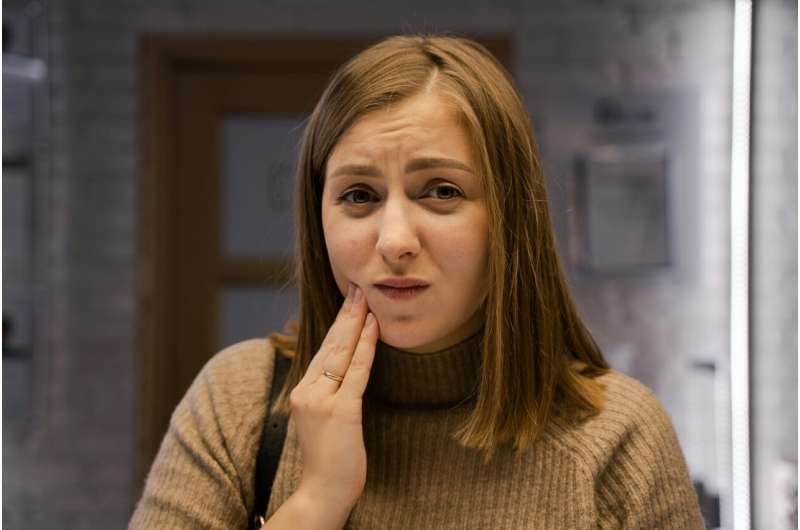This article has been reviewed according to Science X's editorial process and policies. Editors have highlighted the following attributes while ensuring the content's credibility:
fact-checked
trusted source
proofread
Burning mouth syndrome: Study suggests low level laser therapy can offer instant relief

A study suggests that low-level laser therapy (PBM) offers immediate pain relief for Burning Mouth Syndrome (BMS) patients. Over 10 weeks, 30 participants experienced a significant drop in pain scores after each treatment. While efficacy decreased in the following week, a cumulative effect was observed, especially up to the third treatment. The findings highlight the potential of PBM as a promising treatment for BMS, despite some nuances in its effectiveness.
A new study led by Dr. Yaron Haviv, Dr. Ori Finfter and Prof. Doron Aframian and their team from the Oral Medicine Department at the Hebrew University-Hadassah School of Dental Medicine, sheds light on promising developments in the treatment of Burning Mouth Syndrome (BMS) through the application of photobiomodulation (PBM), commonly known as low-level laser therapy (LLLT). The work is published in the journal Oral Diseases.
The 10-week study, conducted with thirty BMS patients, not only underscores the immediate relief offered by PBM but also delves into nuanced aspects of its effectiveness.
BMS presents a complex and debilitating challenge, characterized by persistent intraoral burning or abnormal sensations, occurring without clinically-evident causative lesions upon examination and investigation. This enigmatic disorder primarily impacts the oral cavity, resulting in discomfort and pain, significantly affecting the quality of life for those affected.
The elusive nature of its cause complicates both diagnosis and treatment, with millions of individuals worldwide, especially middle-aged and older women, highly connect with depression, grappling with this condition. The daily struggles faced by BMS sufferers underscore the critical need for comprehensive research and effective therapeutic interventions.
The study focused on investigating how PBM influences individuals with BMS. Utilizing special lights to stimulate cell function, the 30 BMS patients received intraoral treatment for 10 weeks. Pain assessments were conducted using the Visual Analog Scale (VAS) immediately after each treatment, with a calculation of weekly average VAS aiming to evaluate both the immediate and long-term effects of PBM on alleviating BMS symptoms.
Results from the study revealed a substantial decrease in the initial pain score, as measured by the VAS, from 7.80 to 2.07 after the treatments (p <� 0.001). Although there was a slight increase in the average pain score to 5.73 in the week following the last treatment, it remained significantly lower than the initial score (p = 0.017).
Notably, the researchers observed a trend of continued improvement in pain relief with additional treatments, particularly up to the third session. Moreover, the study highlighted that PBM demonstrated enhanced efficacy for male patients or those experiencing pain on only one side of their mouth (p = 0.017, 0.022, respectively).
PBM emerges as a promising avenue for providing immediate pain relief to BMS patients. While the efficacy diminishes in the week following treatment, the study underscores a notable trend of increased pain relief with repeated sessions, especially up to the third treatment.
These findings open new possibilities for understanding and addressing the challenges posed by BMS, offering hope for improved therapeutic interventions in the future.
More information: Ori Finfter et al, Photobiomodulation alleviates Burning Mouth Syndrome pain: Immediate and weekly outcomes explored, Oral Diseases (2024). DOI: 10.1111/odi.14900



















